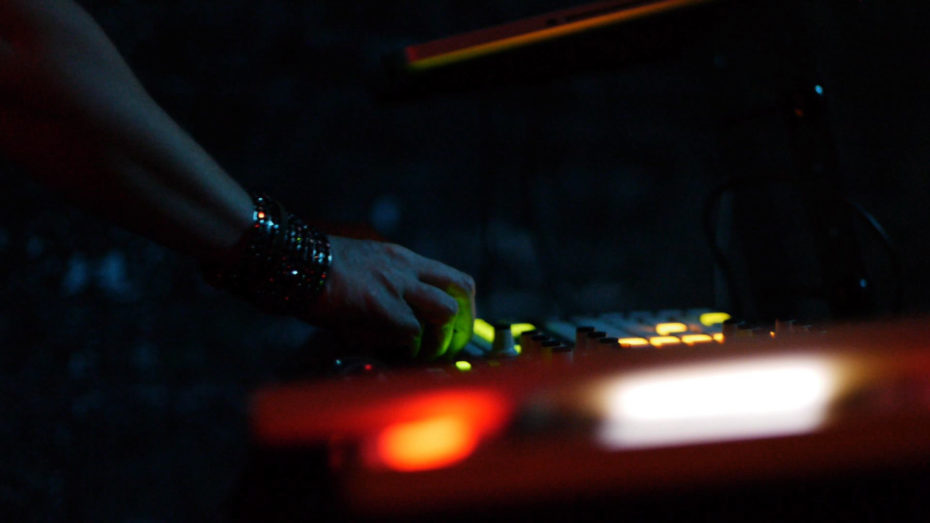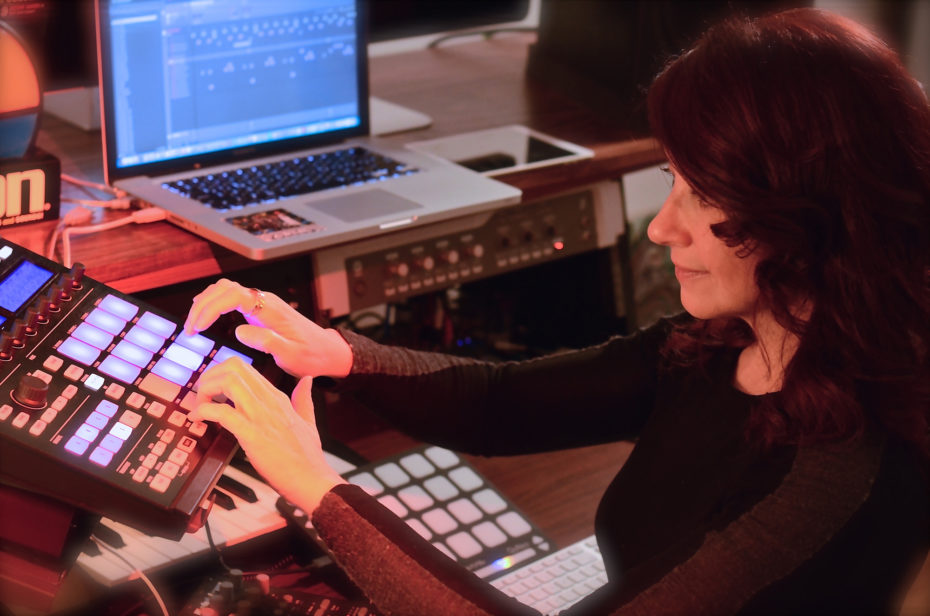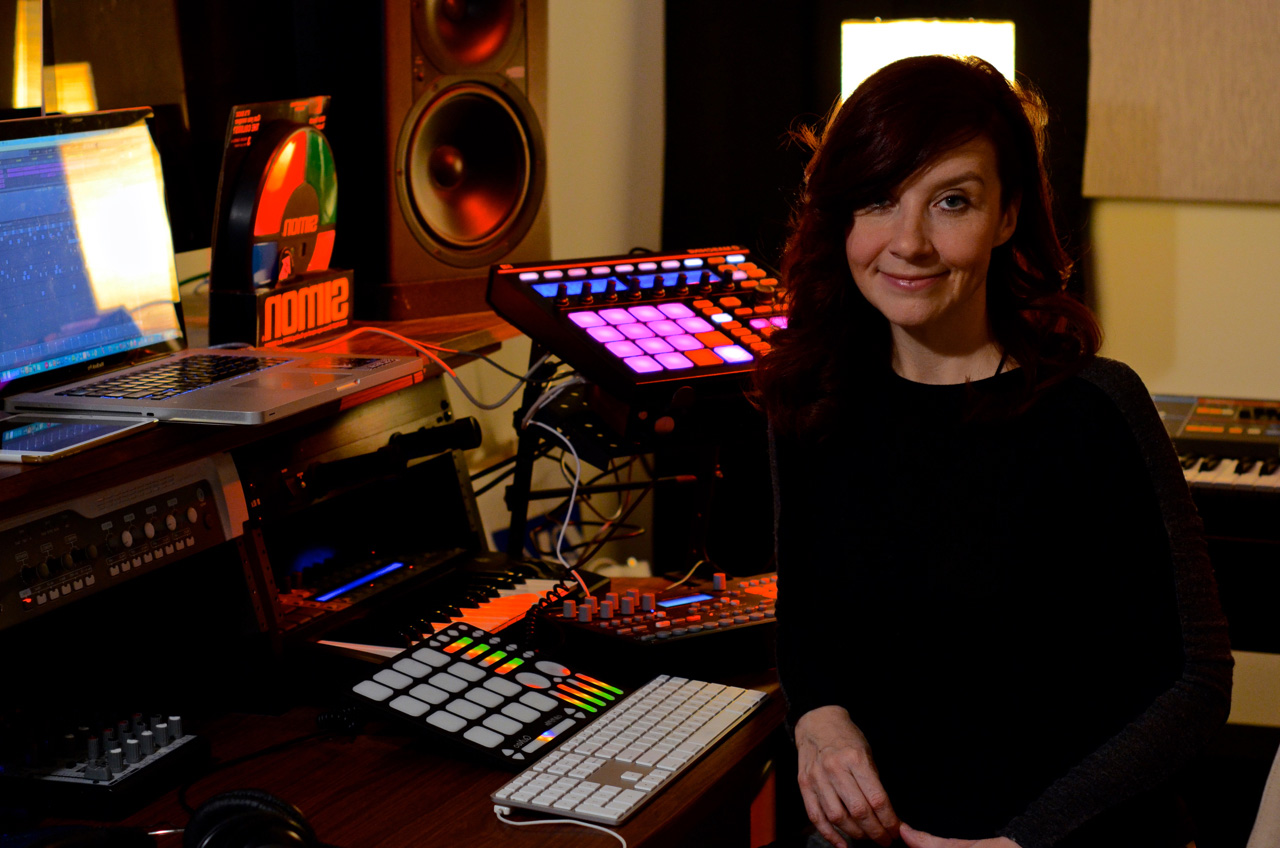Sound designer and educator Michele Darling has lent her ears to some of the most vital platforms in children’s media, including Sesame Street and Simon Says toys, and will be joining the UPA in this years one of a kind sound design career development program.
Michele, you have worked with some amazing clients as a sound designer for children’s media, from Sesame Street to the electronic game Simon. Could you give us a brief history of how you came to work in this field in particular?
When I was a kid, I was fascinated by the sound of Sesame Street. Early on, its soundtracks were filled with all sorts of dreamy, trippy and magical insanity. Joe Raposo, the composer, included so many different genres from funk to pop to avant-garde; what’s even more important is it didn’t patronize the kids. I just loved it – each skit was filled with a short musical masterpiece!
Working with sound for kids’ media has allowed me to make a living off music and sound. Not to mention, it’s fun making outrageously silly and wild soundtracks full of imagination! Imagine doing sound for a dancing milk carton, a spaceship, an ice skating penguin, or a non-existent world for instance and also contributing to a child’s education and entertainment – it’s been a great gig. Plus, there’ve been some really funny moments – times that I laughed so hard I almost fell off my chair. These are a few of the things that helped me decide to make this my career.
My music tech professor at NYU, Dr. Robert Rowe, connected me with the composer Morton Subotnick to be a beta tester for his Making More Music children’s software. Mort was a classically trained musician, who was also into electronic music and new technologies. He was looking to hire someone with a similar background. I wrote music for his software and tried to push it to its absolute limits. In just a few months I had all this child-friendly music written in a variety of different styles.
Shortly after I’d heard through the grapevine that The Children’s Television Workshop (now Sesame Workshop) was hiring a composer with electronic music/computer experience for their Interactive Department. So I jumped at the chance. I played them samples from some of the music that I’d created for Mort’s software. They ended up liking what they heard and decided to give me an opportunity!
This is how it began. And from there I eventually branched out to other companies. My clients have always been varied so I was able to jump between composing music to sound effects editing and Foley to ADR (Automated Dialog Replacement for animated TV) to production sound for the Muppets to mixing for different mediums like TV, gaming, online and mobile media…you get the picture. I’ve even had the chance to create sound for electronic toys.

How do children react to sound differently than adults, and in what ways do they respond similarly?
I think most kids tend to be spontaneous and playful when they hear sound that they like. Younger kids often let loose and completely embody the emotion that they feel from it. They interact with it. They might start dancing or jumping around or acting like a bear for example. Part of it may be that they’re enjoying the newness and how the energy of a song makes them feel and the space that it creates for them. They’re willing to explore more and feel happiness. They’re completely comfortable acting out their physical interpretation of it without a care in the world.
I don’t see this quite as much in adults unless they’re a dancer or going out to a club…or in my house (laughs). But I think many adults become guarded about that kind of spontaneous physical movement…unless of course they’re playing with their children, are coaxed into doing it or…maybe they’re intoxicated; that’s in my experience anyway.
In saying this, every person reacts to sounds differently regardless of whether they’re kids or adults. It’s fascinating how one piece of music will move some people and not others. It’s the vibration and how sound resonates with them, but that’s a whole other subject.
Ok, how about a little background into the tools you use today for sound design, and what you used to use predominantly?
ProTools is still my go-to for sound for picture. I’ve used it for about 18 years now. It’s solid, reliable, and does the job well, especially when it comes to recording sessions, having clients in the room or trying to make tight deadlines – you want your software to be on point. I’m also comfortable using it and know the ins and outs of it, which is a major advantage.
For music, I initially started out using Opcode’s Studio Vision and Reason. But a number of years ago I switched over to Cubase and Logic.
For field recording I use Zoom recorders. When I can’t record or create the sounds myself, I use existing sound effects libraries. They’re extensive and you can find almost anything under the sun.
For creative synth sound design, I use Ableton Live and a variety of plug-ins.
Your work in activism for equality for women has led you to some interesting communities. Can you tell us a bit more about those?
Like many women working in a male-dominated field I like to see myself as a sound designer, audio engineer and composer rather than focusing on the fact that I’m a woman. In saying this I do feel strongly about doing my part to address the gender imbalance within the industry when I can. To me, it’s important to be visible to other women and girls. In my eyes the saying, ‘You have to see it to be it’, really is true. So many of us decide to follow in the same direction as those that inspired us as kids.
I was lucky enough to meet and briefly chat with the astronaut Cady Coleman. She does public speaking events for this reason, because she was inspired to become an astronaut when she saw a female astronaut when she was younger. Bringing it back to the audio and music industries; if girls aren’t seeing many women up in that DJ booth or behind the mixing desk, or if they aren’t able to connect with their friends or family about these things, there’s a tendency for them to feel that their options are more limited or that there isn’t much of a community for them out there. For some girls, not all, but some, it can be off-putting, intimidating, or something they don’t even entertain.
If an organization asks me to speak at an event or to mentor girls, I’m happy to do it because I want them to recognize that there are so many different possibilities for them out there. Therefore it’s totally feasible for them to follow their passions regardless of their gender or gender identity.
The Intrepid Museum in NYC has an incredible program called GOALS For Girls. It’s for those girls that are interested in science. There’s also the Lower East Side Girls’ Club, which gives girls exposure to different areas of art and science including audio recording and music technology. Girls in these programs have told me that they love talking about science fields and learning, but aren’t connecting with many girls around them at school or home who’re interested in the same things as they are. So I guess you could say that those places create a support system and community for the girls to thrive in and also discover new and exciting possibilities for themselves.
When I taught at Long Island University my classes were made up of mostly men. After 5 years working there, more and more women came to my classes, and during my last year I had a balanced class! I believe it was because they’d found out about my class and felt it was an option for them. For all of the same reasons, I, along with Kristen Pozibelle Cannon and Kelly Webb founded a group called Women Beatmakers. The aim was to create a space for women to talk about music technology with other women, to share their music, and more importantly to support and inspire one another.

How can schools do better to help women feel safe and appreciated in music education?
Schools should do their best to have a diverse and gender-balanced staff. Faculty and staff need to have proper training in the classroom, including how to handle sexual harassment. Schools also need zero-tolerance policies and major repercussions for any untoward behavior.
For teachers, if you have a classroom filled with 20 or so men and one woman and see that she’s not engaging much with her classmates, keep an eye out and be sure to touch base with her to see how she’s liking the class and how she’s fairing. It can be intimidating for some women, especially if she’s really new to the subject.
In my first recording engineering classes I was the only woman out of anywhere from 25 to 100 guys. I don’t remember having any classmates in those situations that I hung out with or talked to about questions that I may have had at the time. At first it felt intimidating, especially during those times when I wasn’t made to feel very welcome or that there was the automatic expectation that I was going to fail.
To be honest, I was forced to build up my own confidence. But eventually I found some support systems at NYU and in some of my jobs, where I’m grateful to have met and worked with several awesome men in the field that were more than supportive, spoke to me as an equal, and wanted to see me thrive. This is how schools can help!
Talk to the female students and see if they’d like to have monthly meet-ups with other women. There’re actually a ton of women doing music tech, but they usually aren’t in the same room. So meet-ups help connect women with different levels of experience so that they can trade info, techniques, and just have some camaraderie with one another.

Tell us more about your recent music projects!
I’m excited to be doing preset sound design for Ableton for Live 10 and Live sound packs, which are coming out this year! I can literally sit at the computer and tweak a sound for hours on end and not realize the sun has gone down, so the job fits my personality well.
 Call me crazy, but I’m a classic workaholic and creative, so I have about five different projects going at a time.
Call me crazy, but I’m a classic workaholic and creative, so I have about five different projects going at a time.
I’ve also just launched a 60-Day program for artists called ‘The 60-Day Artist Challenge’ (www.60dayartistchallenge.com). It came out of years of working with students and getting to know their life goals, strengths, and frustrations as artists. It starts with goal setting and then dives deeper into the healing process and learning new skills to curb any obstacles that could get in your way. It ends with a good kick in the pants and a bit of a wake up call to motivate you to get your work done and be the very best at your craft so you can reach your ultimate goals. Who doesn’t need this? One of the best things about it is seeing the results and I’m thrilled that it’s been helping people, and it’s something I use myself on a regular basis, so I can confidently say it works!
With music, I’m working on an EP with my partner Terry Golob for our experimental down-tempo project called Aerostatic. I make house music under the name Misha D and try to practice bass before bed each night. The performance collective Girls Like Bass embodies my house and funk roots and has lots of fantastic costumes by House of Hallucination. We’ve performed a lot in NYC, but are on a hiatus right now while I work on other projects. I can’t wait to get back to it. I’ll leave you with this picture from that project:
Finally, you will be an integral of the upcoming Sound Design Career Development Program. How do you see our program as opposed to most already in schools?
The UPA is offering audio related subjects that I’ve never seen offered anywhere else, making it a really unique place. The level of skill and experience in your master mentors is inspiring. It strikes me that you don’t often see this kind of professional mentorship in one place.
In your Sound Design Career Development Program, the idea of career development is huge because students always need guidance in the steps it takes to transition from a student to a professional. In creative fields there isn’t one blueprint that every person takes to get into the industry. So, it’s really helpful for a student to learn directly from people who’re working in the industry and that have also been really successful at the same time. This provides mentorship and connections, both of which are absolutely essential to a student’s success in these industries.



Leave a reply